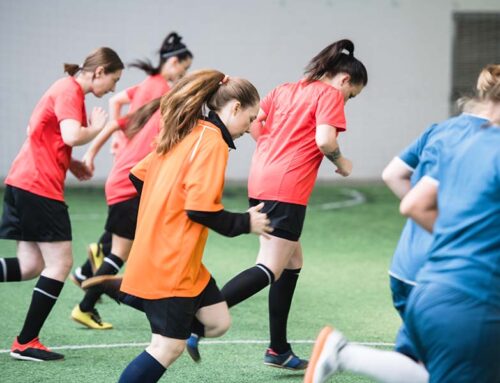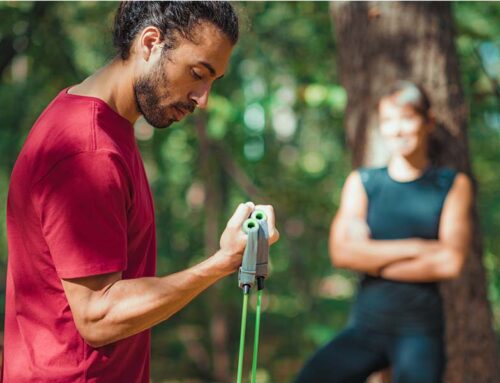
Share This Story, Choose Your Platform!
Six Dimensions of Wellness for Active Adults
As a Certified Fitness Professional I receive information from many wellness and resource companies. One of my favorite organizations is the International Council on Active Aging. I enjoy working with the Older Adults. One of the programs that The ICAA has taught us is the Six Dimensions of Wellness for Older Adults. As a wellness/fitness professional by embracing whole-person wellness it can help you achieve greater success with your clients.
According to the ICAA, today, millions of older Americans are experiencing a higher quality of life by taking a self educated, proactive and personally responsible approach to their personal wellness. Whole-person wellness programs are founded around the six dimensions of wellness – emotion, intellectual, physical, social, spiritual and vocational health – along with personal wellness concepts that include self-responsibility, optimism, and a self-directed approach. These programs are proving to be an effective way to improve the functioning of older adults and promote successful living.
Facilities that adopt the whole-person wellness model can enhance and enrich the lives of their members. I enjoy sharing this information with our fitness contractors that work with our company Fitness Finders. (place web-site address here)
The following six examples are based on each dimension of wellness:
The Intellectual Dimension:
Changing the mind is crucial to staving off diseases like Alzheimer’s. Research in the Journal of the American Medical Association shows that even participating in ordinary tasks, such as reading, listening to the radio and playing games like checkers and cards on a daily basis may stave off the memory-robbing illness. It is beneficial to explore new topics that require judgment and decision-making. Fitness Finders has found that incorporating seminars and lectures for our contacted locations has proven effective.
The Social Dimension:
It is important that people get emotionally involved with their wellness experience. It is beneficial to create strong emotional bonds. We find that getting to know our clients names and introducing them to other fitness class participants is a great way to boost the social dimension. We suggest to our contracted locations that they place pictures of their residents on the wall.
The Vocational Dimension:
I have heard some great examples of the vocational dimension. There was a woman who was nearing her 50 th birthday and she found herself deconditioned, obese and suffering from chronic conditions. She felt intimidated by walking into a gym. Desperate to change, she hired a personal trainer. The personal trainer not only trained her but also taught her how to get certified as a personal trainer so now she helps others achieve their goals.
The Spiritual Dimension:
A study by AARP (American Association of Retired Persons) shows that once people retire, they adopt a new sense of time as their values and beliefs begin to change. Part of this change is due to this group’s desire to get in touch with their inner self as they search for the “meaning of life:” A business associate was telling me about his mother’s “story” When she became a widow she decided to sell her home and purchase a condominium. She felt it was beneficial to spend her time and money on something else besides the up-keep of a house. She found that owning the condo gave her the freedom to travel and she went to Greece to sculpt. While she was traveling she would rent her condo for those three months. The rental would assist her in paying for her trips.
The Emotional Dimension:
The research, which was published in the August 2002 issue of The Journal of Personality and Social Psychology, shows that older people can literally think themselves into the grave with negative thoughts about getting older. Study participants who said they had more positive views about aging lived an average of 7.6 years longer than those with negative perceptions. A positive outlook on life can contribute to well being. Programs that support this dimension have a profound effect on the lives of many older people. Stress management workshops, counseling, humorous workshops, mind/body exercise, support groups, social events, are a few examples.
The Physical Dimension:
Most people know about the research that shows that regular exercise offers benefits across a wide range of health conditions and problems, from cancer to various types of gallbladder disease, heart disease and diabetes. Perhaps most importantly, exercise can preserve function and independence. The challenge is designing programming that is applicable to each individual. Programming for the physical dimension for older adults should incorporate strength and functional training, cardiovascular exercise, appropriate breathing techniques, flexibility, balance and coordination, range of motion movements along with appropriate assessments and screening, proper nutrition and weight control. Fitness Finder’s mission is to assist locations in establishing the whole-person wellness programs. We work with fitness, health and recreational professionals that practice the whole-person wellness approach.



